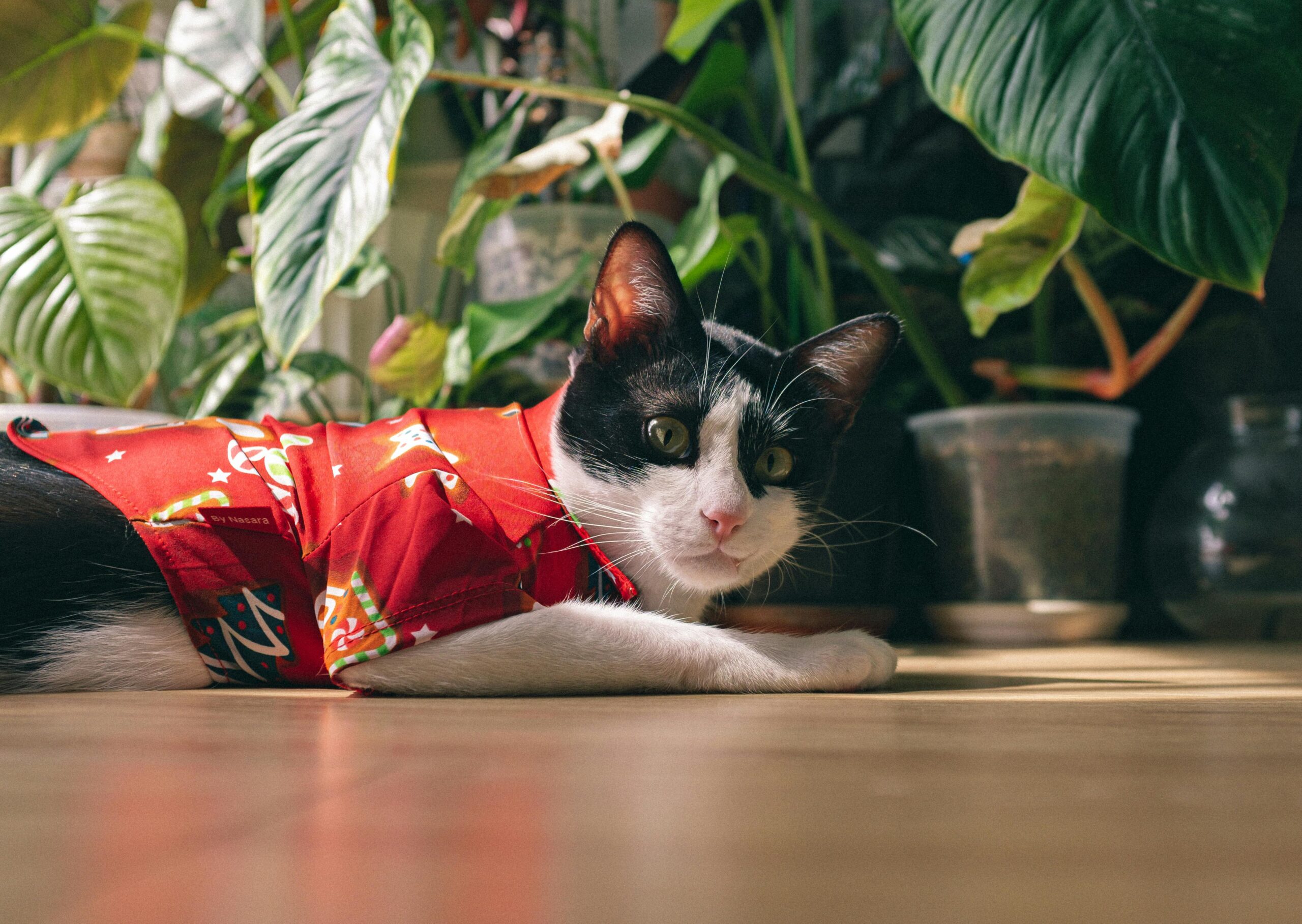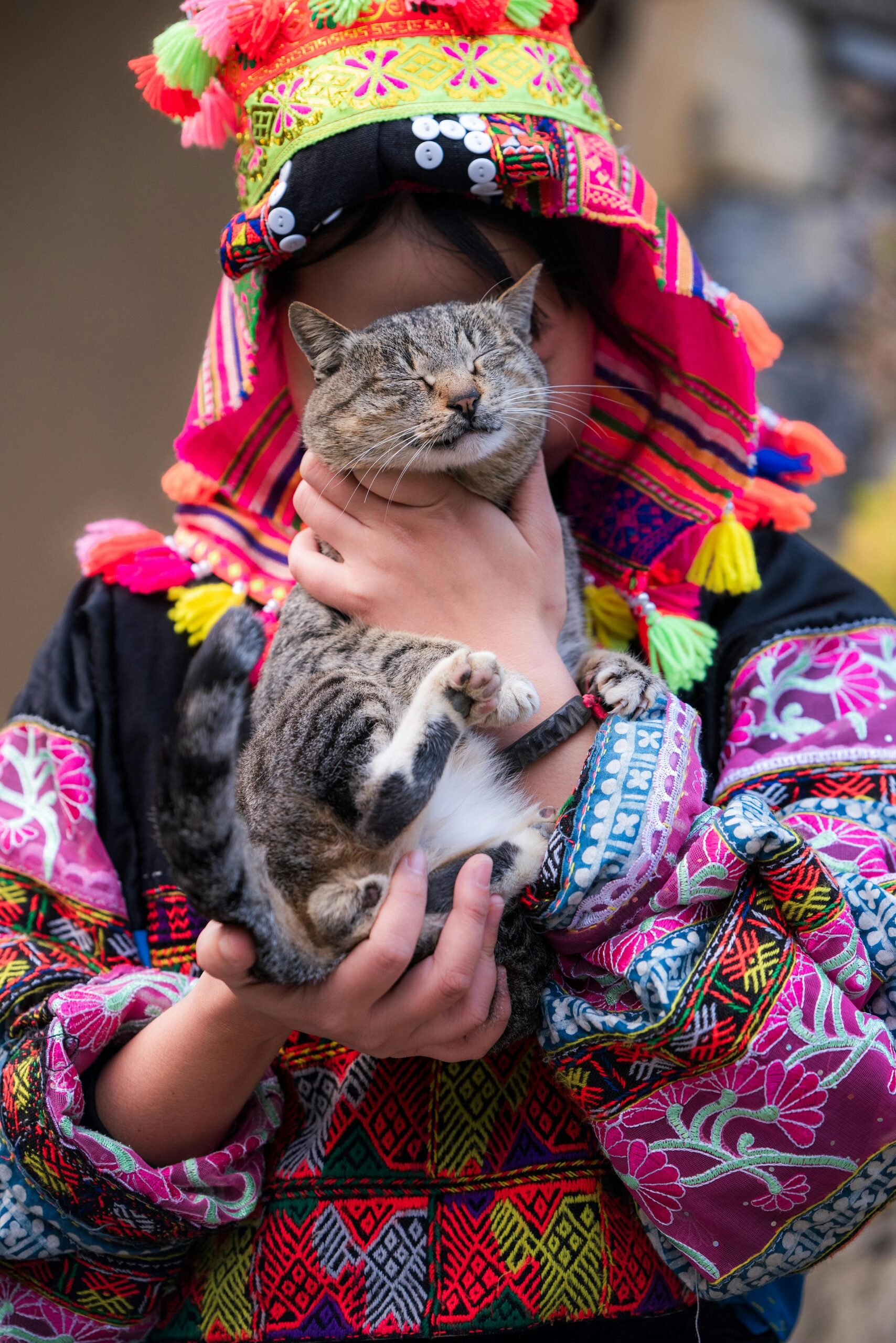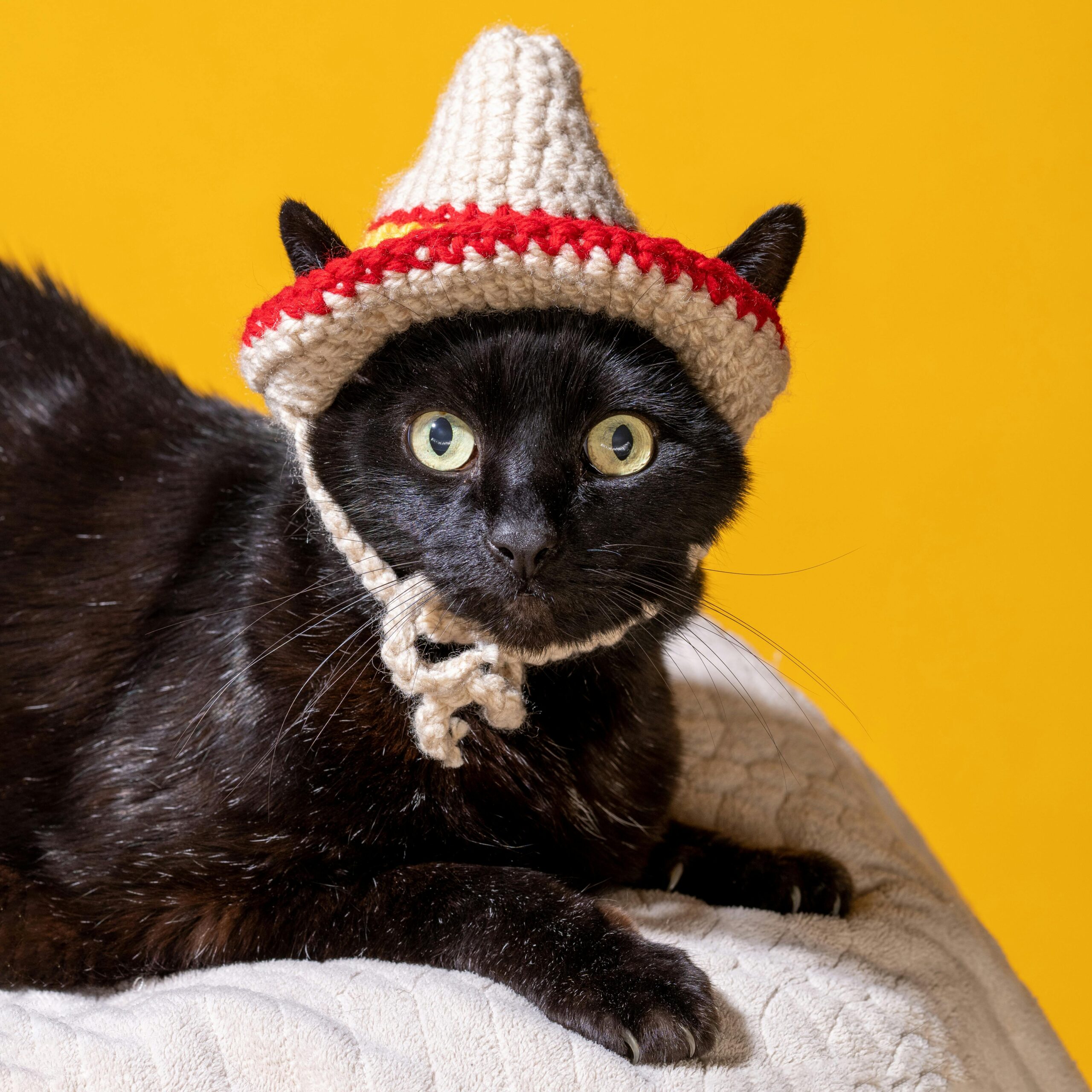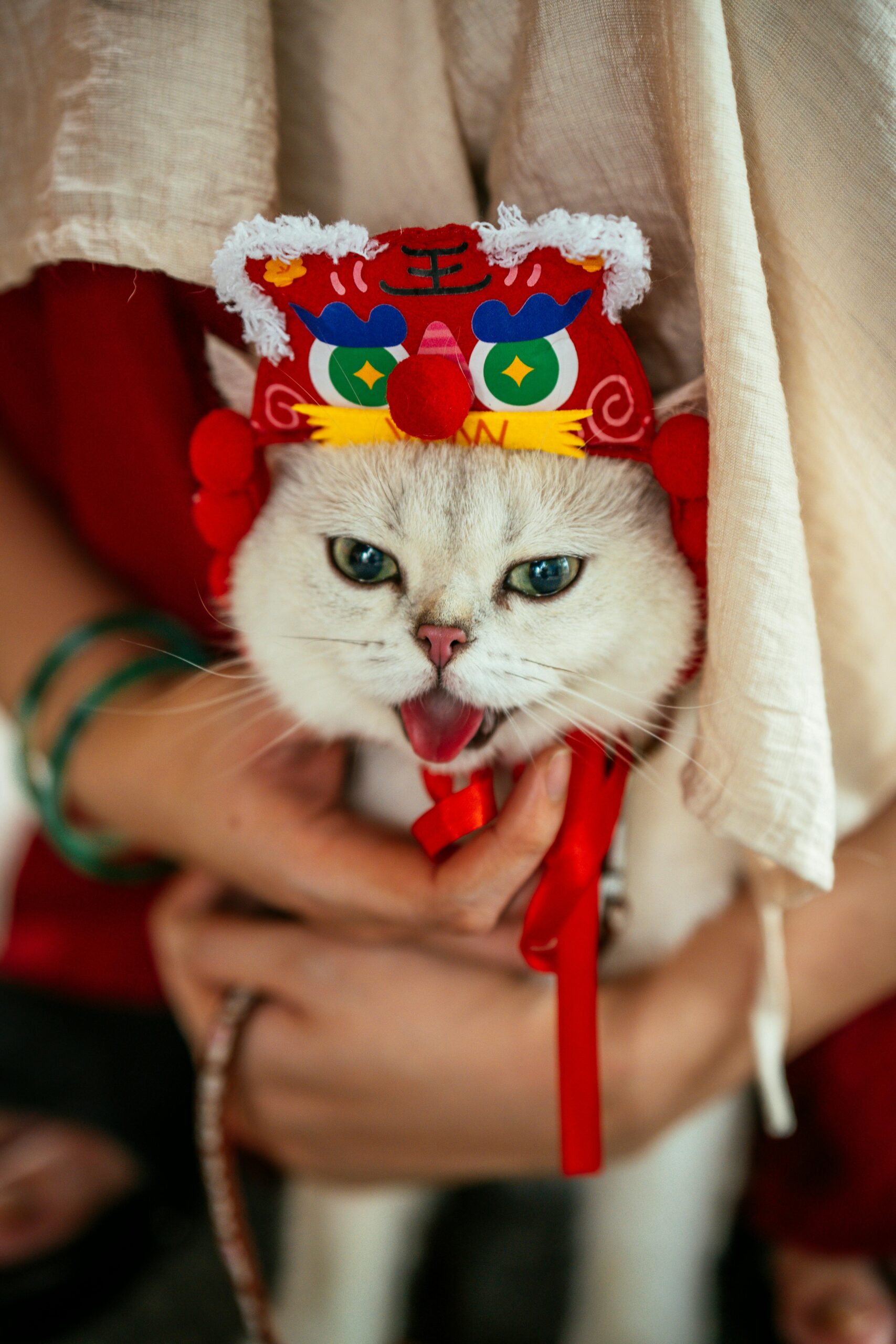
Where Cats Take Center Stage
in a World of
Culture and Curtain Calls
Welcome to my whimsical world of paws, props, and playful performances! This page is all about how to build a miniature theater stage for your cat, perfect for showcasing their daily drama. Inspired by the elegance of Asian theater and the undeniable flair of feline personalities, this fun DIY project blends creativity, culture, and cat-friendly design. Whether you’re staging a full costume photoshoot or just giving your kitty a stylish lounging spot, this guide walks you through every step. Get ready to craft a tiny stage where your cat can shine like the true star they are!

Theatrical Whiskers, Cultural Wonders.



One Cat. Many Stages. Infinite Stories.
- Exploring the Vibrant World of Asian Theater: A Journey Through Tradition and Innovationby DianaThe allure of Asian theater is undeniable. It captivates audiences with its rich traditions, intricate performances, and dazzling aesthetics. From the powerful narratives of Japanese Noh to the colorful exuberance of Indian Kathakali, Asian theater offers a diverse tapestry of cultural expression. Let’s embark on a journey to explore some of the most fascinating elements of this dynamic art form. ## **A Brief History of Asian Theater** ### **Origins and Evolution** Asian theater is believed to have originated thousands of years ago, with roots deeply embedded in religious rituals and cultural ceremonies. Traditional performances often focused on themes of morality, mythology, and history, aiming to educate and entertain audiences. As societies evolved, so did the art form, incorporating new influences and techniques. ### **Diverse Traditions Across Countries** – **Japan**: Known for its distinct styles like *Noh*, *Kabuki*, and *Bunraku*, Japanese theater is a harmonious blend of music, dance, and drama. – **India**: With forms such as *Kathakali*, *Bharatanatyam*, and *Yakshagana*, Indian theater is a vibrant celebration of storytelling and spirituality. – **China**: The elegance of Peking Opera and the cultural significance of *Kunqu* showcase China’s theatrical diversity. – **Indonesia**: The shadow puppetry of *Wayang Kulit* and the dramatic *Balinese Dance* reflect Indonesia’s rich cultural heritage. ## **Key Elements of Asian Theater** ### **1. Music and Dance** Music and dance are integral to Asian theater, providing rhythm and emotion to performances. Traditional instruments and vocal techniques create an immersive experience, drawing audiences into the narrative. Dance movements, often symbolic, convey complex stories and emotions. ### **2. Costumes and Makeup** The visual spectacle of Asian theater is enhanced by its elaborate costumes and makeup. Intricate designs and vibrant colors help define characters and set the tone of the performance. For instance, the exaggerated makeup in Kabuki highlights the dramatic elements of the story, while the colorful attire in Kathakali symbolizes different deities and demons. ### **3. Storytelling Techniques** Asian theater is renowned for its storytelling prowess. Performances often weave together mythological tales, historical events, and moral lessons. The use of *masks*, *puppetry*, and *mime* adds layers of depth to the narrative, engaging audiences in a multi-sensory experience. ## **Modern Influences and Innovations** ### **Blending Tradition with Modernity** In recent years, there has been a surge of innovation in Asian theater, with artists blending traditional styles with contemporary elements. This fusion has led to the creation of new genres and forms that resonate with modern audiences while preserving their cultural roots. ### **Globalization and Cultural Exchange** Asian theater has also gained international recognition, with increasing collaborations and cultural exchanges. Festivals and workshops worldwide celebrate Asian theater, introducing its unique charm to global audiences. This international exposure has inspired artists to experiment with cross-cultural themes and techniques. ## **The Impact of Asian Theater** Asian theater not only entertains but also educates and inspires. It fosters an appreciation for cultural diversity and encourages dialogue across borders. By preserving age-old traditions and embracing new ideas, Asian theater continues to thrive, captivating audiences with its timeless appeal. ## **Conclusion** The world of Asian theater is a kaleidoscope of tradition, innovation, and cultural expression. Its ability to adapt and evolve while staying true to its roots is a testament to its enduring appeal. Whether you’re a seasoned theater enthusiast or a curious newcomer, exploring Asian theater promises a journey of discovery and delight. Embrace the magic of Asian theater—where every performance is a celebration of life, culture, and the human spirit.
- How a Local HVAC Company Saved Our Family From Another Night in a Hotelby Diana
Working from home in Cooper City has been one of the biggest blessings for me and my family. I love the freedom to set my own schedule, spend more time with my kids, and be there for the little moments that truly matter. But last week, that comfortable routine came crashing down—literally—with a broken AC on one of the hottest nights we’ve had this year.
It all started during the middle of a workday. I was answering emails, juggling Zoom calls, and trying to stay productive when I noticed the house was getting warmer by the minute. I thought maybe it was just the afternoon sun, but by 5 PM, it was unbearable. The thermostat was climbing past 85 degrees and no cool air was coming out of the vents. Not exactly the best environment for conference calls—or cranky toddlers.
We tried to tough it out, but with the heat only getting worse, my wife and I had no choice. We packed up the kids, grabbed the essentials, and checked into a hotel for the night. Not only was it uncomfortable and disruptive, but it also wasn’t cheap. I kept thinking, there’s no way we can keep doing this every night if the AC isn’t fixed.
The next morning, between sips of hotel coffee, I started searching online for local HVAC repair companies in Cooper City. I was determined to find someone who could not only fix our system quickly but also not charge us an arm and a leg. That’s when we came across a company that had amazing reviews—people raving about their fast service, fair pricing, and super friendly technicians.
I gave them a call, and right away, I knew I had made the right decision. They were professional, asked the right questions, and most importantly, they scheduled a same-day appointment. By the afternoon, the technician showed up at our house, tools in hand and ready to work.
After a quick inspection, they found the issue—a bad capacitor and some clogged filters were causing the system to fail. It was such a relief when they told me the repair would be way less expensive than another night at a hotel. Honestly, it was a fraction of what I thought it would cost. No up-selling, no pressure, just honest service and a clear explanation of what needed to be done.
Within an hour, the cool air was flowing again. I stood under the vent in the living room and literally sighed with relief. That night, instead of cramming into a hotel room, we slept in our own beds. The kids were back in their rooms, my wife and I got to relax on the couch, and most importantly, our house finally felt like home again.
Now that the AC is running like new, I’m back to working comfortably from my home office. No more sweating through meetings or worrying about where we’ll sleep at night. This HVAC company didn’t just repair our air conditioner—they restored normalcy to our family life.
If you’re working from home in Cooper City and facing AC issues, I can’t recommend these guys enough. Their quick response, friendly service, and affordable repairs made a huge difference for us. I’m beyond grateful for the work they did—and for keeping our family safe, cool, and exactly where we belong: at home.
- How to Build a Miniature Stage for Your Cat’s Daily Drama
 by Diana
by DianaLet’s be honest—cats are natural-born actors. One minute they’re peacefully napping like retired royalty, the next they’re launching into a high-speed chase around the living room as if auditioning for a martial arts film. I used to joke that my cat Mika should have her own stage… until I actually built her one. And let me tell you—it was the best decision ever.
In this post, I’ll walk you through how to build a miniature theater stage for your cat—a whimsical DIY project that’s equal parts fun, functional, and fabulously dramatic. Perfect for themed photoshoots, naps with flair, or just letting your feline thespian embrace their inner star.
🎭 Step 1: Gather Your Materials
You don’t need to be a set designer to pull this off. I used mostly recycled or inexpensive materials:
- 1 large cardboard box (big enough for your cat to sit comfortably inside)
- Fabric scraps (for curtains and “carpeting”)
- Wooden dowels or chopsticks (for curtain rods)
- Hot glue gun or double-sided tape
- Scissors or box cutter
- Non-toxic paint or colored paper (optional for decorating)
- Bonus: fairy lights, origami props, paper lanterns
I went with a traditional Japanese Noh theater vibe for my first stage—red curtains, dark wood tones, and cherry blossom accents—but you can customize yours based on your cat’s (and your) flair for the dramatic.
🧱 Step 2: Construct the Stage Base
Take your box and cut off one entire side, creating an open “front.” This will be your stage face.
Line the inside with soft fabric or felt—something your cat can lounge on. I used a dark blue velvet scrap to give it a rich, dramatic feel (and because it hides fur!).
Cut a small “door” in the back if your cat prefers multiple exits—some stars need an escape route.
🎀 Step 3: Add Curtains and Details
Now for the fun part: curtains!
Glue or tape your fabric to the top inner edge of the open box. I gathered the fabric slightly to create that classic theater curtain swoop and used chopsticks as curtain rods for a cleaner look. You can tie the curtains back with string or leave them hanging dramatically.
I also added a small overhead “sign” that says The Meowjestic Theater, made from a piece of cardstock. You can add themed props depending on what kind of “performance” your cat’s giving—fans, masks, little folding screens, or toy swords.
💡 Step 4: Introduce Your Star
Once the stage is built, don’t force your cat inside. Let them explore it on their own terms. I sprinkled a little catnip and added a favorite toy to catch Mika’s interest. Kumo, my other cat, just jumped right in like he was born to act.
Take some photos, offer treats, and let your cat get used to their new theatrical domain. With a little patience, they’ll be napping, rolling, and striking poses like a true diva.
🌟 Final Thoughts
Building a mini stage wasn’t just a quirky DIY project—it became a special space for my cats. It’s where I shoot photos, tell stories, and share laughs with them. It’s also a beautiful nod to the rich traditions of Asian theater, brought down to a cat-sized scale.
Whether you’re crafting a Chinese opera stage or a Thai shadow puppet backdrop, one thing is guaranteed: your cat will steal the show.
Curtain up, paws out—let the drama begin.
- Behind the Scenes: How I Photograph My Cats in Costume
 by Diana
by DianaIf you’ve scrolled through my blog or Instagram, you’ve probably seen my cats dressed as tiny geishas, samurai warriors, or miniature opera stars. Maybe you’ve wondered, “How on earth did they get that shot?” Or maybe you’re just hoping to capture one decent photo of your own cat in a Halloween costume without ending up with 42 blurry shots and one paw in the face.
Well, let me take you behind the scenes—into the fur-flying, treat-bribing, light-juggling world of cat costume photography.
Because trust me: it’s equal parts art, patience, and absolute chaos.
🎭 Step One: The Costume Comes First
It all starts with a vision. Maybe I’ve been inspired by a traditional Kabuki outfit I saw in a documentary, or a bold Chinese opera mask I spotted at a market. I sketch out my ideas, then try to translate that look into something cat-sized and wearable.
The golden rule? Comfort first. Always.
The best costumes are soft, easy to slip on, and avoid tight areas around the neck or belly. I usually use felt, velcro, and elastic for flexibility, and I always do a “comfort test” before the camera ever comes out. If my cat looks annoyed or starts pulling it off? We stop. No shot is worth stressing them out.
🐾 Meet the Models
I currently have two regular stars: Mika, my elegant tuxedo cat with a diva streak, and Kumo, a fluffy gray cloud of a boy who is shockingly chill about everything—including wearing a tiny kimono.
Mika is the dramatic one. She’ll pose like a pro if she feels like it. Kumo, on the other hand, just wants snacks. I’ve learned to work with their personalities, not against them.
Tip for aspiring cat photographers: know your cat. Some love attention and costumes. Others… not so much. Start small—maybe a scarf or hat—and always use positive reinforcement.
💡 Setting the Scene
Once the costume’s ready and the cat is in a cooperative mood (key phrase: in a mood), it’s time to set the stage. And I mean that literally. I have a small folding table that I transform into different “sets” using cloth, paper backdrops, fake cherry blossoms, origami, or props I’ve collected over the years.
My favorite scene so far? A miniature Noh stage with red curtains, a paper lantern, and a bamboo mat. Kumo wore a little mask (briefly) and sat like a wise old actor. I nearly cried. It was that cute.
Lighting is everything. I use two softbox lights with diffusers, but natural daylight by a window can work wonders too. Avoid harsh flashes—they startle cats and flatten out their features. Warm, soft light makes fur glow and helps capture those gorgeous whiskers.
📸 The Shoot: Patience is the Secret Ingredient
Once the costume is on, the set is ready, and the cat is… mostly in place, I get into position. I shoot with a mirrorless camera (Sony Alpha series), but even a smartphone with portrait mode can do magic these days.
The trick is to shoot fast and often. Cats don’t pose on command. I take bursts of 5–10 shots while making silly noises, crinkling paper, or dangling feathers off-camera to get their attention.
And yes, I bribe them. Relentlessly.
Every few minutes, we stop for playtime or snacks. If they get restless or irritated, we stop altogether. There’s always another day.
Some of the best shots happen in those in-between moments—a sideways glance, a dramatic yawn, a paw swipe that somehow looks elegant. Those are the real treasures.
🧹 After the Curtain Falls: Editing & Clean-up
Once the shoot’s done, I upload everything into Lightroom and start sorting. I usually take 100+ shots per session and maybe keep 5–10 really good ones. I adjust lighting, sharpen eyes, and sometimes remove a stray fluff or treat crumb from their fur.
But I try not to over-edit. The charm is in the realness—the slightly crooked hat, the sideways smirk. These cats aren’t models. They’re characters.
And once everything’s edited? Treats all around. My cats get a snack, I get a tea, and we all relax while I pick a photo to share with the world.
💬 Final Thoughts
People often ask me if it’s hard to photograph cats in costume, and I always say, yes and no. Yes, it takes time, patience, and more treats than I care to admit. But no, because it’s so much fun—not just the photography, but the connection, the creativity, and the storytelling.
These aren’t just photos. They’re tiny performances, miniature plays in costume, with two very furry stars. And behind every image is a moment of trust, silliness, and joy.
So if you’ve ever thought about photographing your own cat in costume, I say: give it a try. Start simple, stay gentle, and be ready for the unexpected.
And remember—when all else fails, just let the cat direct.
- What Asian Folklore Teaches Us About Caring for Animals
 by Diana
by DianaWhen I first started my journey into cat rescue, I thought I was just helping animals find homes. But somewhere along the way—between late-night feedings, frantic vet visits, and quiet moments of trust with a scared stray—I realized I was also reconnecting with something deeper: a sense of reverence for life that I had only ever glimpsed in stories. Specifically, in Asian folklore.
Growing up, I heard tales of animals who spoke, who saved lives, who were more than just companions—they were spiritual beings, guides, protectors, even gods in disguise. These stories weren’t just bedtime distractions—they carried deep moral lessons about how we treat living things and the importance of compassion, responsibility, and balance.
🐱 The Cat Who Became a Guardian
One of my favorite tales comes from Japan, where cats have long been seen as mystical protectors. There’s the famous story of the Maneki-Neko (the “beckoning cat”), who is said to have saved a man by raising its paw and guiding him away from danger. In some legends, cats are protectors of temples, guarding sacred spaces from evil spirits. That idea stuck with me—the thought that every cat has a role, a presence, and a purpose.
When I look into the eyes of a street cat, wary and cautious yet still curious, I see that same spark of quiet watchfulness. These cats may not wear bells or sit in shrines, but they still deserve respect. They aren’t just strays—they’re survivors. And they, too, have stories to tell.
🐉 Lessons from the Zodiac and Beyond
In Chinese culture, the zodiac highlights a deep relationship between humans and animals. Each creature—from the noble dragon to the clever rat—has strengths, traits, and lessons to share. While the cat didn’t make the official zodiac lineup (thanks to the scheming rat in some versions of the tale!), it still holds a beloved place in many households. The lesson I take from this mythology is clear: animals are not lesser beings—they are partners in the rhythm of life.
Many Chinese folktales tell of kind people being rewarded for saving or helping animals. One story I love tells of a farmer who rescues a snake and is later saved from disaster by that very creature. These tales remind us that kindness toward animals is never wasted. Even if we don’t see immediate results, we’re building a more compassionate world.
🐘 Karma and Compassion in South & Southeast Asia
In Hindu and Buddhist traditions, compassion for all living beings is a key virtue. Animals are seen as sentient, often spiritual beings, and harming them is believed to create negative karma. The Jataka tales—stories of the Buddha’s past lives—often feature animals he helped or protected. In some stories, he was an animal: a wise monkey king, a generous elephant, a selfless bird. These stories teach that the line between human and animal is not as sharp as we think.
This perspective shifted how I think about rescue. It’s not charity—it’s honor. It’s an act of balance and love, rooted in ancient traditions that view animals as fellow travelers on the path of life.
🌸 What It Means Today
As I clean litter boxes, administer meds, or coax a scared cat out of hiding, I carry these stories with me. They remind me that caring for animals isn’t just an obligation—it’s a spiritual practice, one rooted in generations of belief, myth, and cultural wisdom.
Folklore isn’t just fantasy. It’s a reflection of what a culture values. And across Asia, from temple cats in Japan to talking tigers in Korea, from noble elephants in India to protective fox spirits in China, one truth rings clear: how we treat animals says everything about who we are.
So maybe that cat curled up in my window isn’t just a rescue. Maybe she’s a guardian. A guide. A reminder that in caring for her, I’m honoring a tradition much older—and wiser—than I ever knew.
